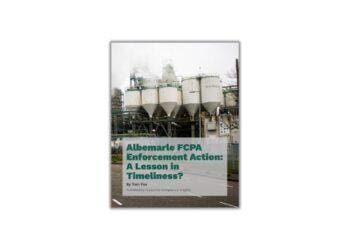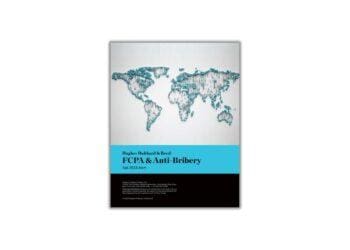The DOJ’s Antitrust Division is at long last following the Criminal Division’s lead in awarding credit for a company’s strong compliance program. Baker Donelson’s Robert Hauberg, Jr. and James Holloway discuss what corporations can expect now.
For years, the Antitrust Division of the Department of Justice resisted – in contrast to the Criminal Division – considering and awarding credit for companies’ “robust” compliance programs. The mantra has been that the first-in no-prosecution incentive of the amnesty program and more modest credit under “leniency plus” are sufficient, and they constitute “ultimate credit for effective antitrust compliance programs.” As of July 11, 2019, in a speech at NYU and related press release, Assistant Attorney General Makan Delrahim changed that dynamic and announced a new credit incentive for corporate compliance programs in both charging decisions and sentencing recommendations. “Good corporate citizenship” will now be rewarded.
Prosecutors in the Antitrust Division now operate under detailed changes in the Justice Manual requiring considerations in nine areas to evaluate how much to credit compliance programs. Three key overriding questions emerge:
- Does the company utilize a “well designed” compliance program?
- Does the company apply its compliance program “earnestly and in good faith”?
- Does the company’s compliance program actually work?
Such a program should address and prohibit criminal conduct, detect such conduct, facilitate prompt reporting and discover involvement of senior management.
The nine underlying factors to evaluate the effectiveness of a compliance program are as follows:
- Design and comprehensiveness of the compliance program
- “Culture of compliance” within the company
- Sufficiency of responsibility and resources for antitrust compliance
- Use of antitrust risk assessment procedures
- Antitrust compliance training provided to employees
- Use of appropriate monitoring and auditing procedures
- Sufficiency of processes for reporting antitrust noncompliance
- Compliance incentives and discipline used by the company
- Remediation process for antitrust noncompliance
How these questions and areas of inquiry are answered may sway the Antitrust Division to prosecute, enter a deferred prosecution agreement (DPA) or possibly even offer a rare nonprosecution agreement (NPA). DPAs would forego prosecution in exchange for monetary penalties and conditions going forward.
With few pre-existing examples of DPAs (and NPAs), it is hard to assess whether their possible terms will encourage or discourage companies from spending the costs and efforts to develop gold standard compliance programs. Has the company in addition proactively self-reported, cooperated and taken remedial action? If the company does not meet one of the key factors, is it out totally? What do the terms “detect,” “facilitate” and “prompt” mean? What effect on possible prosecution of employees – current and former – may result?
Should a prosecution result, the sentencing factors to be considered include a possible three-point reduction in the culpability score used to calculate fines under the Sentencing Guidelines. These factors also raise questions. Whereas fine reduction under the Sentencing Guidelines for the truly effective compliance program may be encouraging, again, how does this benefit a charged corporate defendant above and beyond the monetary discounts offered by the leniency program?
ACPERA (the Antitrust Criminal Penalty Enhancement and Reform Act) legislation limits the first leniency recipient to single-damage exposure. What will be the effect on civil litigation for companies with new DPAs requiring admissions or undisputed factual representations? Does the change decrease the possibility of corporate probation or monitorship? In short, while having integrated DOJ guidance and policies in one place increases transparency, corporations still have tough calls and uncertain outcomes to face.



 Robert E. Hauberg Jr. is shareholder in the Washington, D.C. and Jackson, Mississippi offices of
Robert E. Hauberg Jr. is shareholder in the Washington, D.C. and Jackson, Mississippi offices of  James P. Holloway is a shareholder in Baker Donelson’s Government Enforcement and Investigations Group in Washington, D.C. He represents health care providers in complex civil litigation and government investigations.
James P. Holloway is a shareholder in Baker Donelson’s Government Enforcement and Investigations Group in Washington, D.C. He represents health care providers in complex civil litigation and government investigations.






